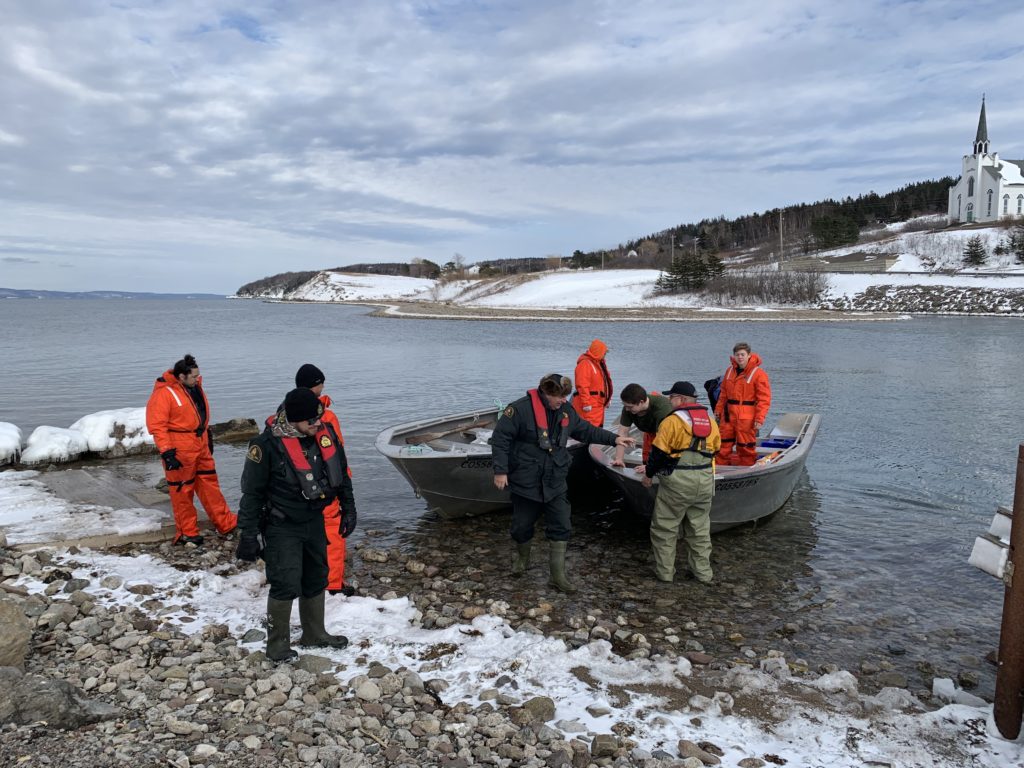Charles Doucette can remember his father hunting seal just a few decades ago—young Charles had to help process the hides and render the fat—but says the local sealing tradition fell away within the Potlotek First Nation.
“For years there just weren’t many seals around, in the lake or in the ocean,” Doucette says, referring to Cape Breton’s Bras d’Or Lake. “And when they started to come back, we all felt like we should leave them alone to recover. But the population has since exploded.”
That boom in grey seals is raising concern in some quarters about the effect of seals on already depleted fish stocks. But it also presents opportunities for reconnecting with the past and perhaps welcoming back the tradition of an annual seal harvest.
With that in mind, Doucette—Fisheries Manager for Potlotek First Nation—had a hand in organizing a Potlotek First Nations seal harvest for youth. The harvest took place at Red Islands in the Bras d’Or Lake in February, with two high-school students and a DFO official along as observers.
Six seals were harvested, in accordance with the group’s licence—a commercial hunt licence, “in case we wanted to sell any of the meat or make something out of the hide,” Doucette says.
Learning traditional processing
Doucette says it was important the youth take part in all aspects of the hunt. “They couldn’t just be there for the kill. The youth participated in the skinning and the harvesting of the organs. They even tried some raw seal meat,” he laughs. “It was a dare, but they did it!”
Netukulimk is a traditional Mi’kmaq concept; a way of life that involves taking only what is needed and wasting nothing. For example, explains Doucette, moose are hunted based on having the best meat, not the largest rack. Catch-and-release fishing does not abide by this principle; neither does a seal cull. “You have to use as much of the animal as possible,” Doucette says.
In that spirit, the seal harvest is ideal: seal meat, hide (both fur and leather), and oil are all valuable. The youth will see the seal processing through all its steps, including tanning the seal hide so it can be used for clothing or craft.

Exploring the local seal market
“We have already shared some of the meat with a group that represents a lot of the Inuit groups in the Halifax area,” says Doucette.
“They currently import seal meat from the north, which is very expensive. We want to explore the market. We harvest grey seal, which is a different species than they take up north.” Doucette is eagerly awaiting the reviews of local seal meat.
Although weather delays meant the seal meat from the youth harvest couldn’t be shared at this year’s Winter Feast, Doucette is pleased with the inaugural event. Plans are already rolling to hold another next year; he already has heard interest from other nearby bands.



